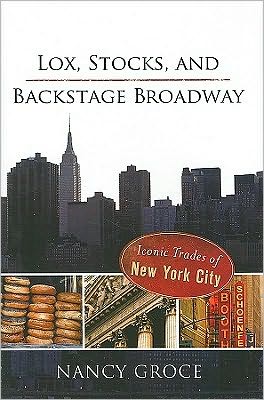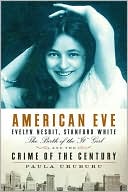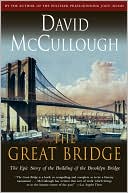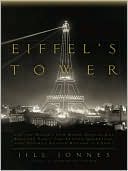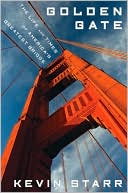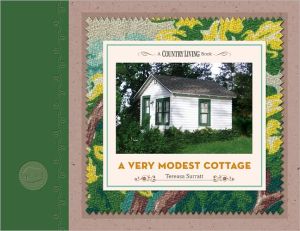Lox, Stocks, and Backstage Broadway: Iconic Trades of New York City
From Broadway and Wall Street to the farthest reaches of New York's fabled subway system, and with numerous stops in between, this publication celebrates the occupational skills, crafts, knowledge, and traditions that have made New York legendary. Based on extensive interviews undertaken by Smithsonian Institution folklorists and researchers to document urban culture in the five boroughs at the turn of the millennium, Lox, Stocks, and Backstage Broadway introduces readers to a remarkable cast...
Search in google:
Occupations such as water tower building, bialy making, and lox smoking are just a few of the older trades that have declined in practice in most of the country, but still thrive in contemporary New York City. The reader will hear what it is like to follow these long-standing, generational trades from some of their foremost practitioners, as well as learning about new and evolving occupations, like graffiti art.Publishers WeeklyStarred Review. Profiling those who craft the artistry of Broadway, pilot NYC subway trains, construct the city's ubiquitous water towers, plaster Manhattan walls with graffiti, and more, this compendium of big city trade from Library of Congress "folklike specialist" Groce is packed with the fascinating testimony of cityfolk who honestly love what they do. The process of making a wig for a Broadway show, detailed by designer Linda Rice, involves thousands of individual hairs hand-tied to mesh, taking some 15 hours to complete and a minimum of $1,200. The graffiti industry is well-considered some three decades after it emerged as a cultural force, and the everyday frustrations of riding the MTA's subway system are put into startling perspective: "Approximately 70 percent of Americans who ride mass transit each day do so in New York City." Groce also demystifies Wall Street with the help of traders and others, and serves up everything there is to know about Bagels and Bialys on Coney Island: the third-generation owner of Russ and Daughters says that the present-day variety of shmears (like tofu cream cheese) and fish ("I have ten different kinds of smoked salmon") would make grandfather roll over in his grave. A grand undertaking, Groce's volume makes an absorbing document of "local culture in the global city." Copyright © Reed Business Information, a division of Reed Elsevier Inc. All rights reserved.
Foreword Preface Introduction - Unique New York: Local Culture in the Global City\ 1. Urban Folklore/Occupational Folklore: A Theoretical Street Map\ 2. Backstage Broadway\ 3. Urban Profile - Tats Cru: Graffiti Artists and the Urban Canvas\ 4. Urban Profile - Local 28: "The Tin Knockers"\ 5. The Sixth Borough: New York and the Subway\ 6. Urban Profile - The 86th Street Crosstown Bus: Take a Seat, the Show Is Starting\ 7. Urban Profile - Rosenwach: The Water Tower Builders\ 8. Urban Profile - Russ & Daughters: Lower East Side Appetizing Dynasty\ 9. Urban Profile - Coney Island Bagels and Bialys\ 10. The Cultures of Street Wall Acknowledgments Notes Appendix - New York City Project: Guide to Recorded, Interviews Interview Tape Log - Field Interviews, and Interview Tape Log - Festival Interviews Bibliography Index
\ BooklistThe book...reads like a guided tour of the city without the hassle of climbing on and off a tour bus. Even better, it’s a backstage tour, taking readers to places ordinary folk rarely visit, including a theatrical costume shop and the “homes” of people who live in subway tunnels....A deeply illuminating book that will prove equally interesting to New Yorkers and visitors to the city.\ \ \ \ \ ForeWord ReviewsThese are the stories that make the resulting book, Lox, Stocks and Backstage Broadway, hard to put aside until the final page. Author Nancy Groce has arranged snippets of interviews among detailed historical and cultural contexts to create a riveting collection of characters. These professionals are fascinating not despite their lack of fame but because of it; in a few key ways, they are just like us....Whether Groce is writing about day traders who wear silly hats, train conductors trying to deal with suicides on the tracks, or wig makers who produce the wigs for Saturday Night Live, her prose is respectful and, most importantly, entertaining. One of her great strengths as a writer is knowing when to get out of the way of words of the interviewees; she has a knack for perfectly balancing context with what workers have to say about themselves, their jobs, their families, and their city.\ \ \ Journal Of Folklore ResearchThe book's portraits of nine occupations specific to New York City's particular blend of cultures and activities offer beautiful, well-chosen, and sometimes revelatory descriptions from the city's vast and ever-renewing store of folk traditions....The Broadway chapter offers the richest and most significant ethnographic description of the professional New York theater scene that I have read....Groce and her team do admirable work chronicling life and lor on the trading floor....A fulfilling read for both undergraduate and graduate students, Lox, Stocks, and Backstage Broadway offers a compelling model for beginning to understand how people make their livings and tell their stories within a complex, interwoven, and possibly unique urban ecosystem.\ \ \ \ \ Mike WallaceThose who love getting behind the scenes and under the hood should follow Nancy Groce as she sleuths her way through iconic New York workplaces. Her Studs Terkel-style interviews with bakers and brokers and subway conductors are engaging and intriguing. And if you thought the Chorus Line was the last word on backstage Broadway, think again. In the theater world, as in all the trades she explores, Groce's folkloric eye uncovers the many customs and rituals, rooted in Gotham's history, that make for cooperation as well as competition. A fun and fascinating tour of places you can't visit on your own.\ \ \ \ \ Richard KurinBehind-the-scenes tales of how Wall Street traders, Broadway producers, subway operators and others perform their almost mythic jobs are sure to resonate with native New Yorkers and captivate visitors to the city. Most impressive is how Nancy Groce makes the familiar exotic, and thus provides new insights into the folkways of our contemporary urban culture.\ \ \ \ \ Publishers WeeklyStarred Review. \ Profiling those who craft the artistry of Broadway, pilot NYC subway trains, construct the city's ubiquitous water towers, plaster Manhattan walls with graffiti, and more, this compendium of big city trade from Library of Congress "folklike specialist" Groce is packed with the fascinating testimony of cityfolk who honestly love what they do. The process of making a wig for a Broadway show, detailed by designer Linda Rice, involves thousands of individual hairs hand-tied to mesh, taking some 15 hours to complete and a minimum of $1,200. The graffiti industry is well-considered some three decades after it emerged as a cultural force, and the everyday frustrations of riding the MTA's subway system are put into startling perspective: "Approximately 70 percent of Americans who ride mass transit each day do so in New York City." Groce also demystifies Wall Street with the help of traders and others, and serves up everything there is to know about Bagels and Bialys on Coney Island: the third-generation owner of Russ and Daughters says that the present-day variety of shmears (like tofu cream cheese) and fish ("I have ten different kinds of smoked salmon") would make grandfather roll over in his grave. A grand undertaking, Groce's volume makes an absorbing document of "local culture in the global city."\ Copyright © Reed Business Information, a division of Reed Elsevier Inc. All rights reserved.\ \ \
